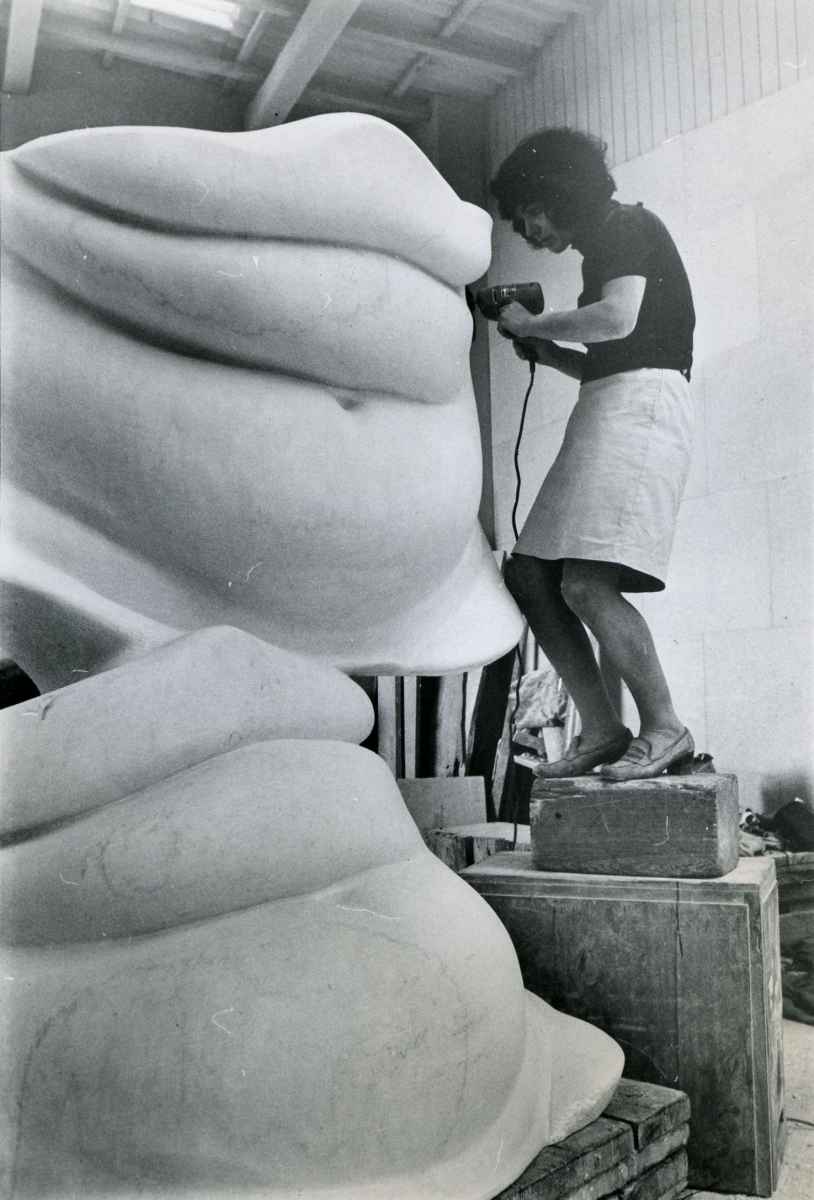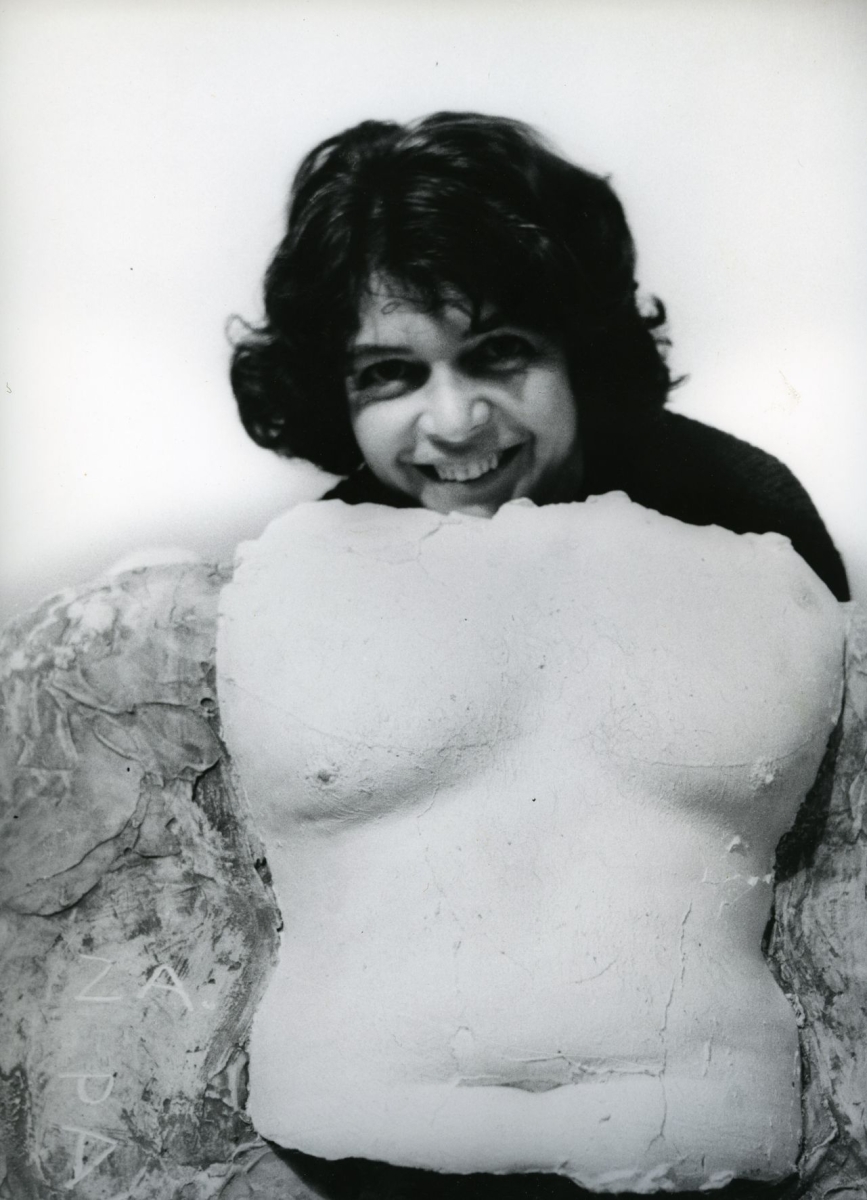The exhibition of Alina Szapocznikow’s works – “Body Languages” – will be available to visitors from 15 March at Kunstmuseum in Ravensburg. Over 80 sculptures and drawings will be presented. German audience will have a rare opportunity to become familiar with the work of one of the most fascinating Polish artists of the 20th century. Adam Mickiewicz Institute supports the exposition.
Alina Szapocznikow – from traditional figurative sculptures towards objets maladroits
Alina Szapocznikow (1926-1973) is one of the most fascinating artists of the 20th century, whose innovative artistic work is being rediscovered in the 21st century. In her sculptural and graphic works, she took on the theme of the human body through which she uncompromisingly shows the fragility of existence and paradoxes of life. Unconventional sculpting practices as well as exploring new materials and forms have elevated her to the status of a pioneer having fundamental contribution to the development of the art of sculpture. No matter if sculpted in marble, stylised as enchantingly glowing lamps, or being a coating that resembles human skin – Szapocznikow’s work combines the entire spectrum of life and has remained as visionary as on the day of its creation.

Alina Szapocznikow for ELLE while at work on Grands Ventres, Querceta Quarries, Italy, 1968, © VG Bild-Kunst, Bonn 2025, Alina Szapocznikow Archive, Courtesy of The Estate of Alina Szapocznikow | Loevenbruck, Paris. Photo: Roger Gain
The works of Alina Szapocznikow were embedded in the context of trends visible in modern art of then, but also invoked her own experiences. Szapocznikow deconstructed the entirety of a human figure. In the 1920s, her works were a response to surrealism, the tendencies of Nouveau Réalisme, and Pop Art. She worked with new industrial materials such polyester and polyurethane and produced series of casts of human body – most frequently her own ones – such as lips, breasts and stomach. She integrated parts of machines, personal photos, media images, and parts of garments into her sculptures. Owing to the use of contemporary aesthetics with respect to media and materials, in this artistic exploration she managed to lend a completely individual expression to grand themes of human existence: passing, pain, and death, but also sensuality and eroticism.
Exhibition “Body Languages” in Ravensburg
The exhibition “Body Languages” at Kunstmuseum in Ravensburg has gathered more than 80 sculptures and drawings and explores Alina Szapocznikow’s work from the mid-1950s to the time before the artist’s death in 1973. A central point of the exposition is unsettling, sensual, and amusingly provoking work she developed from the mid-1960s. The exhibition shows Szapocznikow’s departure from traditional figurative sculptures and evolution towards objets maladroits (“maladroit objects”) – a title she conferred to her later works.
The exposition “Body Languages” will be available from 15 March to 6 July 2025. Ute Stuffer and Prof. Ursula Ströbele, PhD are the exhibition curators. The exhibition will be accompanied by an extensive catalogue and a programme of events:
- Thursday, 27.03.2025, 18:00: In Dialogue with Prof. Ursula Ströbele, PhD (co-curator and history of arts professor, HBK, Braunschweig) and common viewing of the exhibition;
- Thursday, 10.04.2025, 18:00: In Dialogue with Dr Julia Wallner (director of Arp Museum Bahnhof Rolandseck) and common viewing of the exhibition;
- Thursday, 15.05.2025, 18:00: In Dialogue with Luisa Heese (modern art curator at Kunsthalle Mannheim) and common viewing of the exhibition;
- Thursday, 05.06.2025, 17:00: a guided tour with a curator;
- Thursday, 26.06.2025, 17:00: a guided tour with a curator;
- Thursday, 03.07.2025, 18:00: “Sensually Abject: Materiality with Alina Szapocznikow” – a lecture in German by Prof. Charlotte Matter, PhD (University of Basel).

Alina Szapocznikow with her work Torso, Atelier Malakoff, FR, 1966, © VG Bild-Kunst, Bonn 2025, Alina Szapocznikow Archive, Courtesy of The Estate of Alina Szapocznikow | Loevenbruck, Paris. Photo: Marek Holzman
Partners of the exhibition: Adam Mickiewicz Institute, Polish Institute in Düsseldorf.
Co-financed from the funds of the Minister of Culture and National Heritage.

